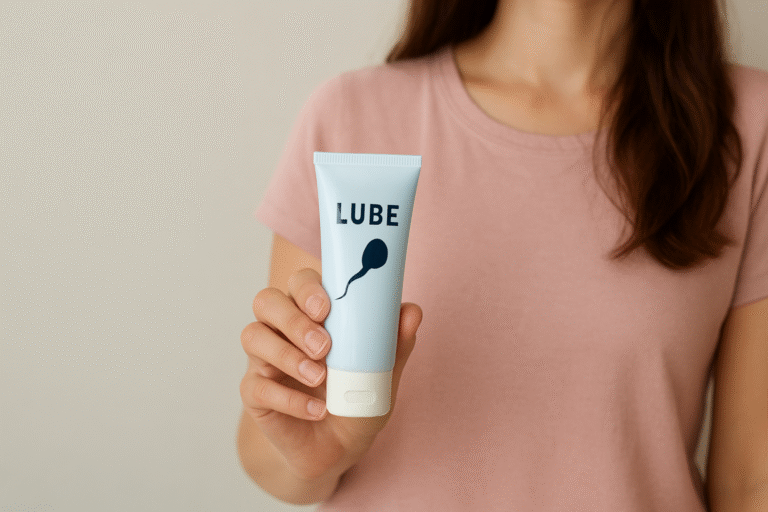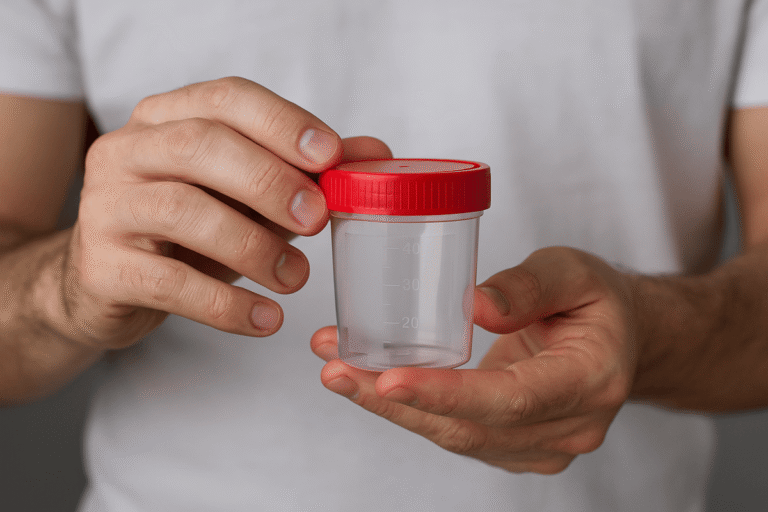Choosing a birth control method is a significant and personal decision. With numerous options available, from daily pills to long-acting implants, finding the right fit for your body and lifestyle can feel overwhelming. If you seek a “set it and forget it” method that doesn’t involve a daily routine or procedural insertion, the NuvaRing may have caught your attention. This small, flexible vaginal ring offers a unique balance between the pill and an IUD. However, before requesting a prescription from your healthcare provider, it is essential to be well-informed. Equip yourself with knowledge about how it works, what to realistically expect, and how it might impact your life. This comprehensive guide will outline the five critical aspects you should understand before committing to the NuvaRing.
1. Understanding How NuvaRing Works and Its Effectiveness
The Mechanism
Unlike the fluctuating hormone levels associated with daily pills, the NuvaRing operates on a principle of consistent, low-dose hormone delivery. The ring is a soft, flexible polymer device approximately two inches in diameter. You simply insert it into your vagina, where it rests comfortably and remains unnoticeable. Once in place, it continuously releases two key hormones into your bloodstream through the vaginal wall: etonogestrel (a progestin) and ethinyl estradiol (an estrogen). These hormones are similar to those found in many combination birth control pills, but the delivery system sets the NuvaRing apart. This constant micro-dosing effectively suppresses ovulation, preventing the release of an egg from your ovaries. Additionally, it thickens cervical mucus, creating a barrier that sperm cannot penetrate, and thins the uterine lining, making it less receptive to a fertilized egg in the event of ovulation.
NuvaRing Effectiveness Rates
When discussing NuvaRing effectiveness, it is crucial to distinguish between “perfect use” and “typical use.” With perfect use meaning you insert and remove the ring precisely on schedule every month, the NuvaRing boasts an effectiveness rate of over 99%. This places it among the most reliable reversible contraceptive methods available. However, typical use accounts for human error, such as leaving the ring in for an extra day or removing it a day early. In real-world scenarios, the NuvaRing is approximately 91% effective. While this still indicates high effectiveness, it emphasizes the importance of following the instructions provided by your doctor and included in the accompanying literature closely. Certain medications, including some antibiotics, antifungals, or HIV medicines, as well as conditions like severe diarrhea or vomiting that affect hormone absorption, may also compromise its effectiveness.
2. Navigating the World of Potential NuvaRing Side Effects
Common and Usually Temporary Side Effects
As with any hormonal contraceptive, your body needs time to adjust to the NuvaRing. Introducing external hormones can lead to an adjustment period lasting two to three months. During this time, it is common to experience some side effects as your body acclimates. The most frequently reported side effects include headaches, nausea, breast tenderness, mood changes, and vaginal irritation or discharge. These effects are generally mild and tend to diminish as your body adapts to the hormones. It is also normal for your menstrual cycle to change; during the ring-free week, your period may be lighter, shorter, and less painful. Some women may even experience no bleeding at all, which can be concerning but is typically not alarming if you have used the ring correctly. Spotting or breakthrough bleeding between periods is another common occurrence, particularly in the first few months.
By understanding these key aspects of the NuvaRing, you can make an informed decision about whether this contraceptive method aligns with your needs and lifestyle.
Infertility Causes
Serious Risks and When to Seek Immediate Medical Attention
While most side effects of NuvaRing are manageable, it is important to note that this medication contains estrogen, which carries a small but serious risk of blood clots (venous thromboembolism). This risk is higher for NuvaRing users compared to women who use progestin-only methods or do not use hormonal contraception. However, the risk remains lower than that associated with pregnancy and childbirth.
It is crucial to recognize the warning signs of a blood clot, which may include severe leg pain, swelling in one leg, sudden shortness of breath, chest pain, a sudden severe headache, vision changes, or weakness on one side of the body. Other serious risks, although rare, include heart attack, stroke, liver problems, high blood pressure, and gallbladder disease. If you experience any symptoms related to these conditions, contact your healthcare provider immediately. Furthermore, NuvaRing is not suitable for everyone; women who smoke and are over 35, have a history of blood clots, certain cancers, or uncontrolled high blood pressure are generally advised against using combination hormonal methods like NuvaRing.
3. Mastering the NuvaRing Instructions
The Monthly Cycle: A Simple Routine
NuvaRing instructions outline a straightforward four-week cycle. On the first day of your period, insert a new ring. It will remain in place for three consecutive weeks (21 days). After this period, remove it for one full week (7 days) to allow for a withdrawal bleed, which resembles a period. You should insert a new ring on the same day of the week exactly seven days after removing the old one, regardless of whether your bleeding has stopped. This “21 days in, 7 days out” schedule constitutes the classic regimen.
Insertion is simple: wash your hands, squeeze the ring between your thumb and index finger, and gently push it into your vagina. The exact position is not critical as long as it feels comfortable. You should not feel it when it is correctly placed; if you do, it may not be inserted far enough. To remove it, simply hook a finger into the ring and pull it out.
Flexibility and “Ring-Arounds”: Advanced Scheduling
One appreciated feature of the NuvaRing is its flexibility in delaying your period. If you wish to skip your period for a special event or vacation, you can perform what is often referred to as a “ring-around.” Instead of removing the ring after three weeks, insert a new ring immediately after removing the old one, thereby skipping the ring-free week. You can use the ring continuously for up to four weeks at a time for suppression period; however, it is advisable to consult your doctor for specific guidance on how long is appropriate for you.
If the ring is accidentally removed for less than three hours, rinse it with cool water and reinsert it as soon as possible. You will still be protected. However, if it is out for more than three hours during the three-week insertion period, your protection may be compromised. Reinsert it immediately and use a backup method of contraception, such as condoms, for the next seven days.
Use Of Ozempic During Pregnancy?
4. The Financial and Practical Considerations
The Introduction of Generic Versions
For many years, NuvaRing was available only as a brand-name product, often accompanied by a higher price tag. Fortunately, the landscape has changed positively for consumers. Generic versions of NuvaRing are now widely available. These generics contain the exact same active ingredients — etonogestrel and ethinyl estradiol — in the same doses and deliver them in the same manner. They are bioequivalent to the brand-name product in terms of performance, safety, and effectiveness. The primary differences lie in the inactive ingredients and the manufacturer. The introduction of generic NuvaRing has significantly reduced costs, making this contraceptive method more accessible to a broader audience.
Cost and Insurance Coverage
The cost of NuvaRing can vary widely depending on your location, pharmacy, and most importantly, your health insurance coverage. Under the Affordable Care Act in the United States, most insurance plans are required to cover FDA-approved contraceptive methods — including NuvaRing and its generics — without charging a copay or deductible. It is wise to contact your insurance provider beforehand to confirm your specific plan’s coverage.
If you are uninsured or if your plan does not cover NuvaRing, programs such as manufacturer savings cards or patient assistance programs may help reduce costs. Comparing prices at different pharmacies and specifically requesting the generic option are effective strategies to ensure you secure the most affordable price for your monthly supply.
5. Is NuvaRing the Right Choice for You?
Making an informed decision requires honest self-reflection and a conversation with a medical professional. Before your appointment, consider these key points.
First, assess your lifestyle. Does a once-a-month method appeal to you more than a daily or procedural option? Are you comfortable with vaginal insertion and removal?
Second, review your personal and family medical history. Be prepared to discuss any history of blood clots, heart conditions, high blood pressure, migraines with aura, or breast cancer with your doctor, as these may be contraindications.
Third, contemplate your future family plans. The NuvaRing is reversible; fertility typically returns quickly after discontinuation.
Finally, remember that while the NuvaRing is highly effective at preventing pregnancy, it does not protect against sexually transmitted infections (STIs). Consistent condom use is still recommended unless you are in a mutually monogamous relationship where both partners have been tested.
Conclusion
In conclusion, the NuvaRing is a convenient, discreet, and highly effective form of birth control that provides a valuable alternative for those wishing to avoid a daily routine. By understanding its mechanism, acknowledging potential side effects, meticulously following the instructions, exploring generic options, and honestly evaluating its fit with your life and health profile, you empower yourself to make the best choice for your reproductive health. Your next step is to take this knowledge and engage in an open, detailed discussion with your healthcare provider to determine if the NuvaRing is the key to your contraceptive freedom.




